Two days in Kyoto is definitely one you have to be organised for, too many highlights, too little time, and some daunting crowds if you choose the wrong times of day. My plan removes the guesswork.
Below I share my travel tips; clear routes, the transport you need, the time it takes, prices in yen, and simple booking tips, meaning you can enjoy the best bits without stress.
I’ve also created a downloadable Google map (all my recommended stops pinned), detailed two day Kyoto itinerary (with time/cost summarised), a crowd plan that shows when to go and when to avoid, plus easy swaps for rain, heat, or if you’d rather travel at a slower pace. Where there’s a choice, I give my personal recommendation on what I’d do.
In short, this should be everything you need for your first time visiting Kyoto!
If you are planning a longer trip, see my 7 days in Japan tour and full guide to two weeks in Japan
TL/DR: 2-Day Plan at a Glance (with Map)
Download the map to your phone so you can follow the route offline. Each day itinerary includes totals for walking, transit and spend. Must-book items are flagged later.
Disclaimer: This article features affiliate links. If you click these links, and choose to book with that hotel or company, I will earn a small commission at no extra cost to you. I appreciate the support that allows me to continue providing this information
Kyoto Day 1 overview
Route: Ninenzaka & Sannenzaka – Yasaka Pagoda – Kiyomizu-dera – Gion (Hanami-kōji & Shirakawa) – Kennin-ji – Nishiki Market – (Optional) Fushimi Inari at blue hour
Totals (typical)
- Walking: 8–11 km
- Transit: 0–30 mins (Keihan to Fushimi optional)
- Spend on sights: ¥800–¥2,000 (mostly free streets + a few paid temples)
My Top Tip: Start by 06:30 to enjoy the lanes empty, then roll downhill to Kiyomizu-dera for opening.

Kyoto Day 2 overview
Route: Arashiyama Bamboo Grove or Adashino Nenbutsu-ji – Tenryū-ji – Saga Toriimoto – Kinkaku-ji – Daitoku-ji – (Optional) Philosopher’s Path
Totals (typical)
- Walking: 9–12 km
- Transit: 45–75 mins (Hankyu/Randen/JR + one taxi short hop)
- Spend on sights: ¥1,500–¥3,000 (mix of paid gardens/temples)
My Top Tip: For calmer conditions and less people in your photos, pick Adashino over the main bamboo forest, then use one short taxi between the northern temples to save time/daylight.
Tickets, Transport & Money: How to Get Around Smoothly
- SUICA card: Tap in/out on JR, private rail, subway and buses. Top up at machines or convenience stores, or for extra convenience, on your phone if you get the digital version.
- Kyoto City Bus & Subway 1-Day Pass: Great for multiple hops in a day; if you’re mostly walking or getting 1/2 trains, pay as you go with a SUICA.
- Taxi vs public transport: For cross-town links (e.g., Ryoan-ji → Kinkaku-ji), a taxi can save 20–30 minutes. Typical short hop: ¥1,000–¥2,000.
- Luggage: Use coin lockers at big stations, consider ECBO cloak or TA-Q-BIN luggage forwarding to send a case to your next hotel and go hands-free when you explore.
Essential transport lines you’ll use
- JR Nara Line (Kyoto Stn – Inari) for Fushimi Inari
- Keihan Line (Gion-Shijō – Kiyomizu-Gojō/Inari) for Day 1
- Hankyu (Kawaramachi – Katsura – Arashiyama) for Day 2
- Randen (Keifuku tram: Shijō-Ōmiya – Arashiyama) for Day 2
Don’t want to plan your itinerary yourself? There are plenty of guided tours, including transport that you can choose from
Typical fares & travel minutes cheat-sheet
| Segment | Time | Cost (adult) |
| Gion-Shijō – Fushimi-Inari (Keihan) | 8–10 mins | about ¥220 |
| Kyoto Stn – Inari (JR Nara Line) | 5 mins | about ¥150 |
| Kawaramachi – Arashiyama (Hankyu via Katsura) | 25–30 mins | about ¥230 |
| Shijō-Ōmiya – Arashiyama (Randen) | 22 mins | about ¥250 |
| Kinkaku-ji – Daitoku-ji (taxi) | 8–12 mins | about ¥1,000–¥1,200 |
My Top Tip: Keihan for Day 1 (clean, frequent). Hankyu out to Arashiyama on Day 2; taxi for the northern temple cluster to save time.
TOP TIP! Make sure you are fully prepared with my “First time visitor to Japan starter kit”
BREAK DOWN THE LANGUAGE BARRIER: The key phrases to learn and technology to use to make your first trip to Japan easy
HOW TO STAY CONNECTED ON THE GO: The cheapest data and easiest way to make sure you can access everything you need
HOW TO AVOID CURRENCY FEES LIKE A PRO: The best cards for travel and withdrawing cash
22 SMARTPHONE APPS TO MAKE YOUR TRIP EASIER: The ultimate FREE apps to download before you go
SAVE 30-90 MINUTES AT CUSTOMS AND IMMIGRATION : The simple and FREE QR code to speed you through the airport
ETIQUETTE DO’S AND DON’TS FOR TOURISTS : What you need to be aware of on your first time in Japan
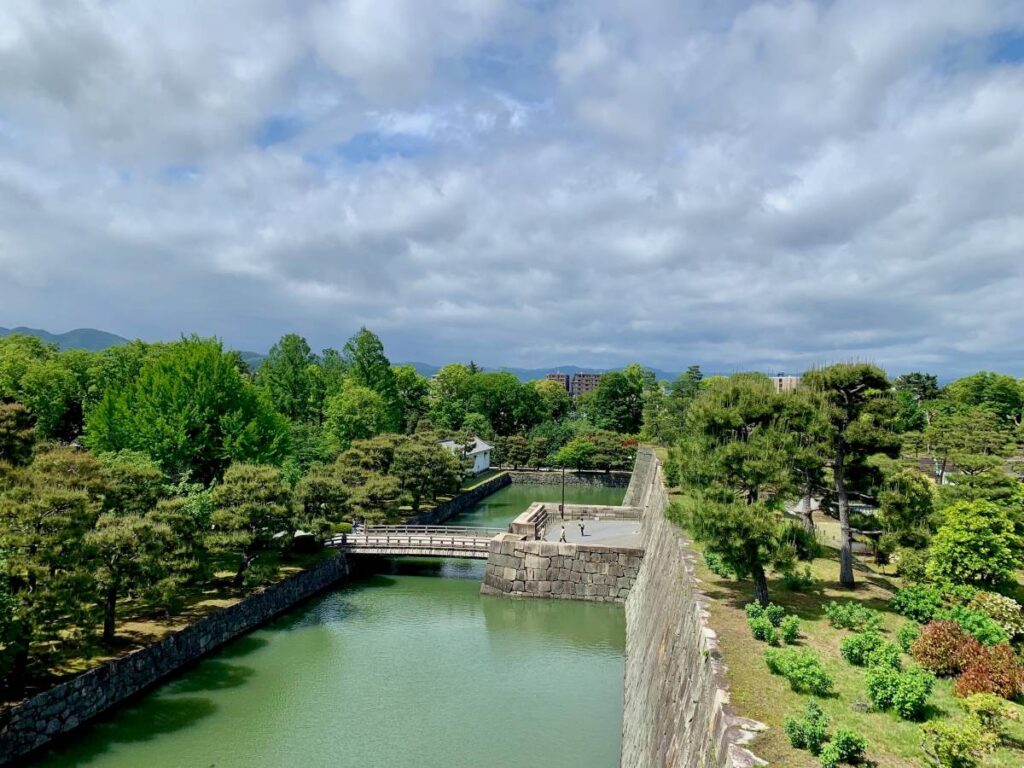
Day 1: Southern Higashiyama – Downtown – Fushimi Inari Shrine (Sunset Option)
Route & timings
- 06:30-07:15 Ninenzaka & Sannenzaka – 07:15-07:35 Yasaka Pagoda (Hōkan-ji) – 07:45-09:15 Kiyomizu-dera – 09:45-11:15 Gion (Hanami-kōji & Shirakawa) – 11:20-12:10 Kennin-ji – 12:25-14:00 Nishiki Market (lunch) – Optional 16:30-18:30 Fushimi Inari (Keihan from Gion-Shijō)
Ninenzaka & Sannenzaka
Stone-paved lanes leading to Kiyomizu-dera, lined with wooden townhouses, small cafés and craft shops. Go early for quiet photos and fantastic lighting.
Time 30-45 mins • Cost Free
Yasaka Pagoda (Hōkan-ji)
Five-storey pagoda anchoring the skyline; best viewed from surrounding lanes.
Time 15-20 mins • Cost Free
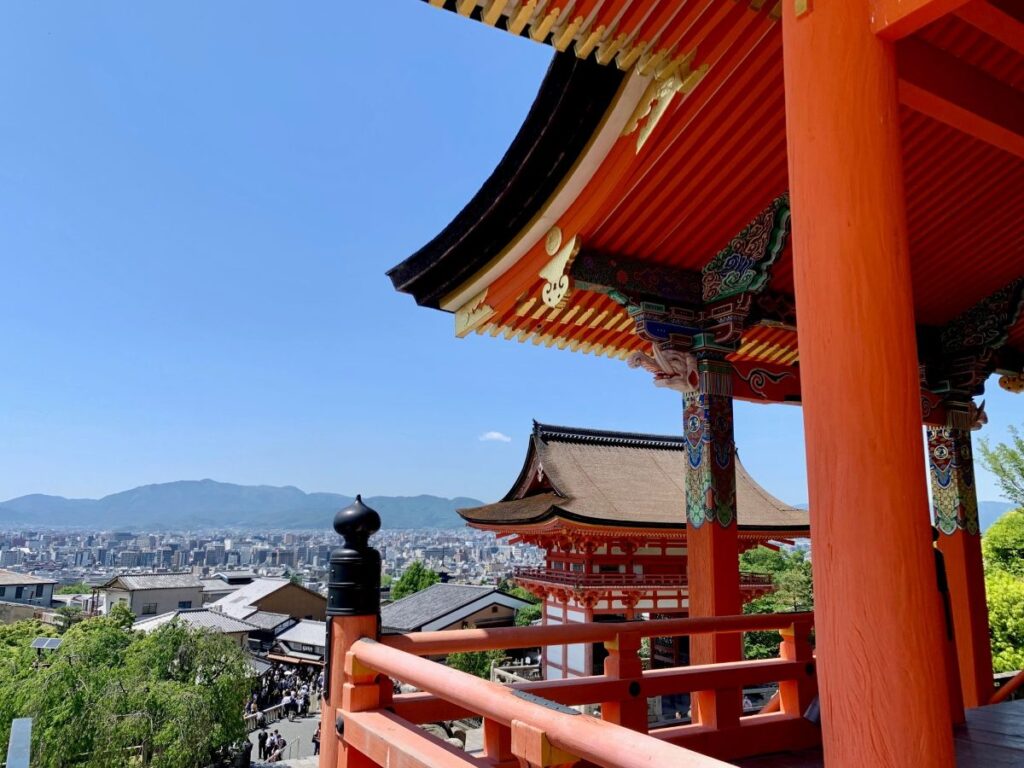
Kiyomizu-dera
UNESCO-listed temple famous for its wooden stage and hillside views. Follow the wooded paths for calmer corners after the main hall.
Time 60-90 mins • Cost about ¥400–¥500
Gion highlights: Hanami-kōji & Shirakawa
Historic entertainment district with wooden teahouses, narrow lanes and willow-lined canals. Probably your best opportunity to see Geisha. Respect privacy and signage, this is where a lot of tourists have overstepped the mark, don’t be that person.
Time 60-90 mins • Cost Free
Kennin-ji
Kyoto’s oldest Zen temple; tranquil halls, dry gardens and a dramatic dragon ceiling painting.
Time 30–50 mins • Cost about ¥500–¥600
Nishiki Market
Covered food arcade nicknamed “Kyoto’s kitchen”; ideal for a casual lunch and souvenir snacks. We ate here multiple times and loved it. It’s a fantastic spot for a guided food tour too
Time 60–90 mins • Cost Free (food typical ¥600–¥1,800)
Where to eat en route during your day
- Street snacks at Nishiki: skewers, croquettes, pickles (no bookings needed).
- Casual noodles near Shijō: soba/udon all day (no bookings needed).
- Jean-Georges at The Shinmonzen: terrace lunch on the river (book ahead).
My Top Tip: Graze at Nishiki and all it’s wonders, then book dinner for the end of the day – Gion fills up fast. Kyoto has some fantastic michelin star restaurants if you are after something extra special
Optional: Fushimi Inari (blue hour)
Mountain shrine with thousands of red torii. Evenings are calmer; walk to the Yotsutsuji viewpoint for city lights and an epic sunset. For me, this is a non negotiable and was one of our highlights in Kyoto, it’s also excellent for those of you searching some instagram worthy photos.
Time 60–120 mins • Cost Free
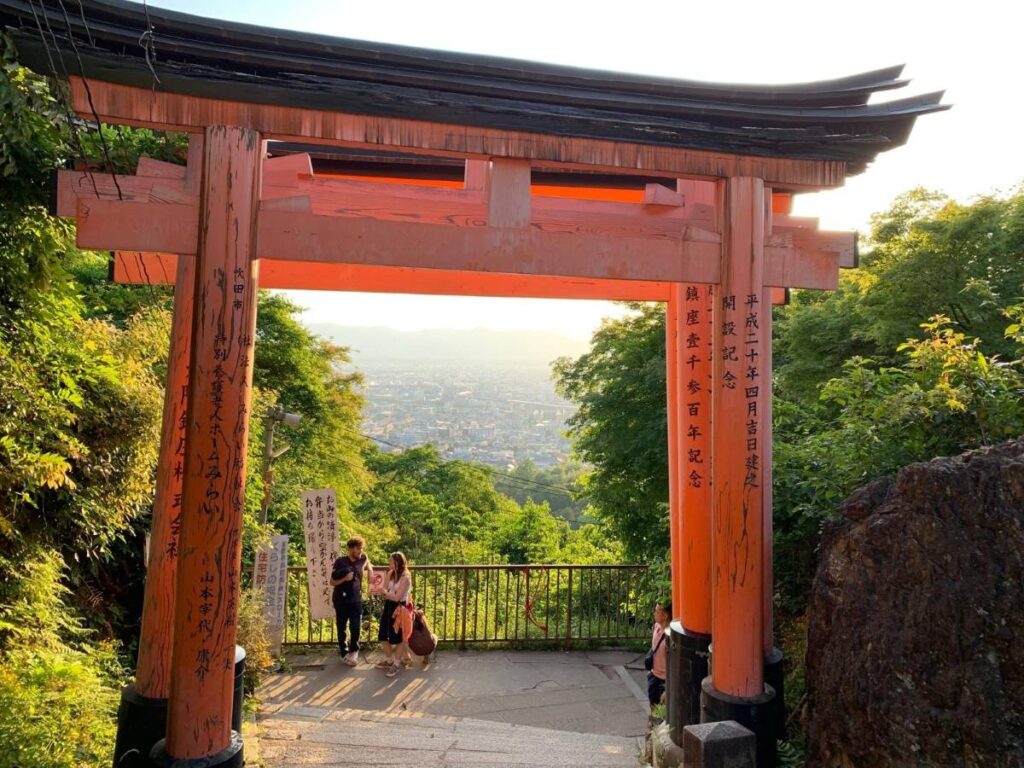
Day 1 Time/Cost summary (table)
| Stop | Time | Cost |
| Ninenzaka & Sannenzaka | 30–45 mins | Free |
| Yasaka Pagoda (view) | 15–20 mins | Free |
| Kiyomizu-dera | 60–90 mins | about ¥400–¥500 |
| Gion (Hanami-kōji & Shirakawa) | 60–90 mins | Free |
| Kennin-ji | 30–50 mins | about ¥500–¥600 |
| Nishiki Market (lunch) | 60–90 mins | Free (food extra) |
| Fushimi Inari (optional) | 60–120 mins | Free |
My Top Tip: If energy dips after lunch, save Fushimi for pre-dawn tomorrow; it’s equally stunning at sunrise as it is at sunset
Day 2: Arashiyama (Early) → Kinkaku-ji/Daitoku-ji → Northern Higashiyama (Optional)
Route & timings
- 06:30-08:00 Arashiyama Bamboo Grove or Adashino Nenbutsu-ji – 08:05-09:00 Tenryū-ji – 09:20-10:00 Saga Toriimoto – (Transfer Randen/Hankyu + bus or taxi) – 11:00-11:40 Kinkaku-ji – 12:00-13:00 Daitoku-ji (choose 1-2 sub-temples) – Optional 15:30-17:00 Philosopher’s Path
Getting there early: Hankyu from Kawaramachi (via Katsura) or Randen from Shijō-Ōmiya. I would personally choose to take Hankyu outbound (faster), then tram back if you fancy a scenic ride and a change of transport type.
Arashiyama Bamboo Grove
A short but atmospheric path through towering bamboo. Very crowded from 07:30; go first thing.
Time 30–45 mins • Cost Free
OR
Adashino Nenbutsu-ji
A bit of a hidden gem, the less busy equivalent to Arashiyama. A quiet temple with a petite bamboo lane and thousands of stone statues – significantly calmer photos than the main grove.
Time 40–60 mins • Cost about ¥500
Tenryū-ji
UNESCO Zen temple with a superb stroll garden; a gentle loop pairs well with the bamboo path next door.
Time 35–55 mins • Cost typical ¥500–¥800
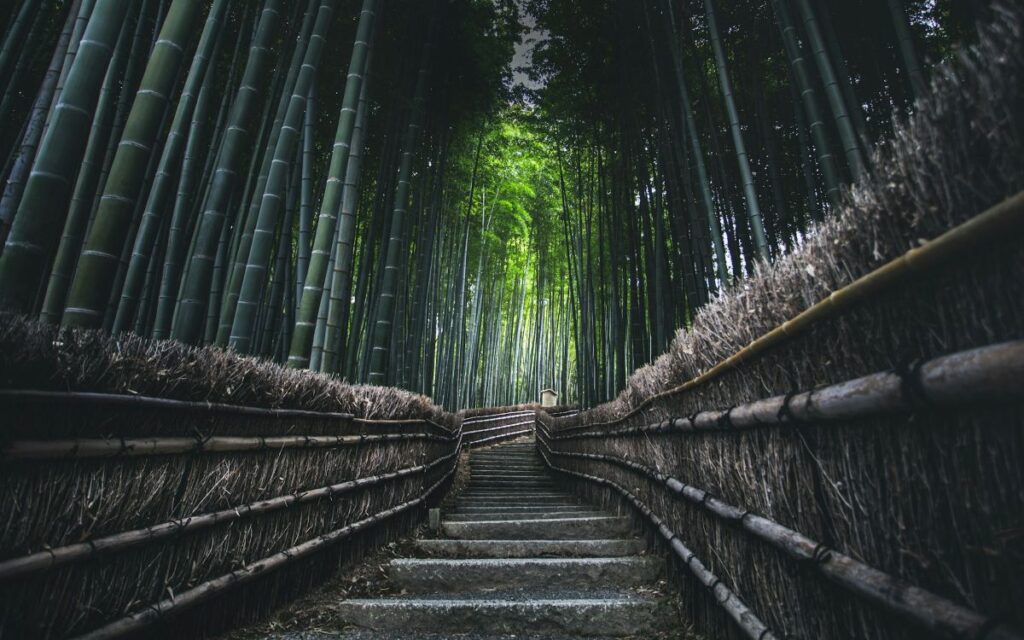
Saga Toriimoto Preserved Street
Historic street of thatched-roof houses at Kyoto’s edge, an easy, peaceful wander away from tour crowds.
Time 20–30 mins • Cost Free
My Top Tip: From the Arashiyama area to the northern temple cluster, a taxi (15–25 mins) often beats multi-leg buses.
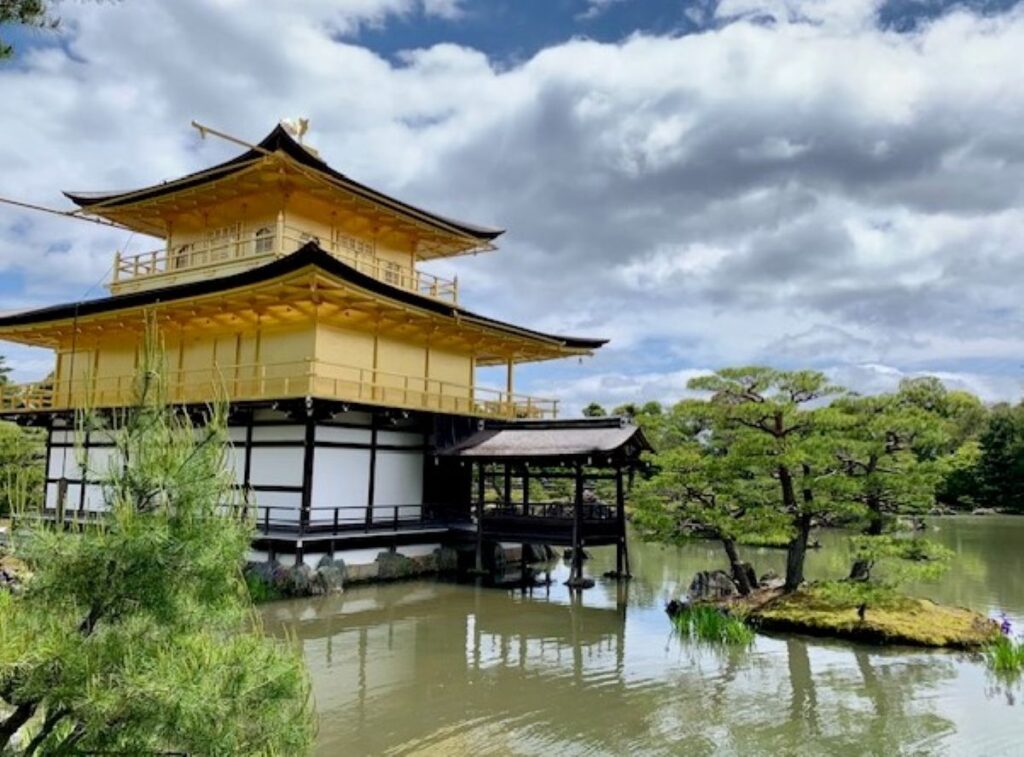
Kinkaku-ji (Golden Pavilion)
Iconic gold-leaf pavilion set beside a reflective pond; a one-way loop path keeps you moving.
Time 30–40 mins • Cost about ¥500
Daitoku-ji (choose sub-temples)
A large Zen complex with multiple sub-temples; pick one or two for superb rock gardens and quiet halls.
Time 40–60 mins • Cost typical ¥400–¥600
Optional: Philosopher’s Path
Canal-side walk linking small shrines and cafés; beautiful in late afternoon with long shadows.
Time 45–75 mins • Cost Free
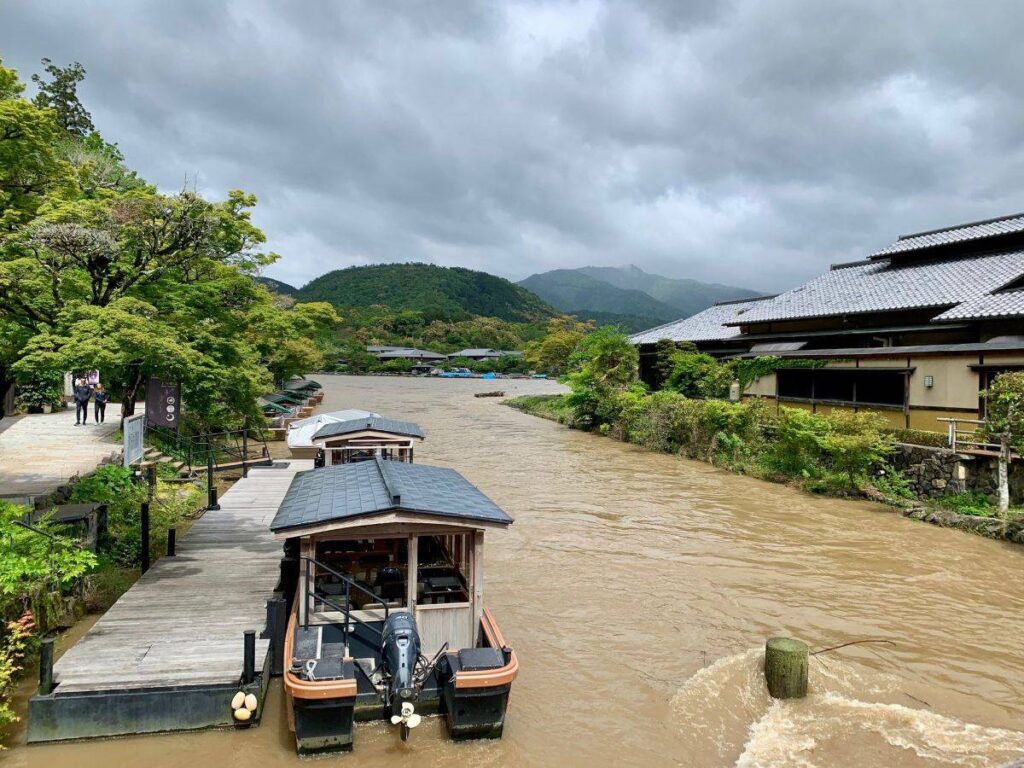
Lunch ideas near the route
- Arashiyama: tofu/river cafés (walk-in early).
- Between Kinkaku-ji & Daitoku-ji: noodle houses on side streets (walk-in).
- Gion/Northern Higashiyama (if you finish there): book ahead for dinner hotspots; small rooms fill quickly.
My Top Tip: Eat light near Arashiyama, then plan a proper dinner back in town, either back to Nishiki or book a more substantial meal.
Day 2 Time/Cost summary (table)
| Stop | Time | Cost |
| Bamboo Grove or Adashino | 30–60 mins | Free / about ¥500 |
| Tenryū-ji | 35–55 mins | typical ¥500–¥800 |
| Saga Toriimoto | 20–30 mins | Free |
| Kinkaku-ji | 30–40 mins | about ¥500 |
| Daitoku-ji (1–2 sub-temples) | 40–60 mins | typical ¥400–¥600 |
| Philosopher’s Path (optional) | 45–75 mins | Free |
Don’t want to plan your itinerary yourself? There are plenty of guided tours, including transport that you can choose from
Where to stay in Kyoto
You have a lot of excellent hotel options in Kyoto, simplistically, you have to choose between 4 main areas; Downtown Kyoto, Gion, Southern Higashiyama and Arashiyama
I have written a detailed breakdown of the pros and cons of each area and recommend some excellent hotels, across mutliple budget ranges, that will help make the decision easier
If you are planning a longer trip, see my 7 days in Japan tour and full guide to two weeks in Japan
TOP TIP! Picking where to stay in Japan can be overwhelming with so much choice – My hand picked guides to the best neighbourhoods and hotels below will do the hard work for you
HOTELS FOR FAMILIES AND BIG GROUPS IN TOKYO : More space, rooms that sleep multiple people and locations that make life easier
THE BEST TOKYO HOTELS : Perfect for couples, first time travellers and those looking to minimise their time on public transport
THE PERFECT AREAS TO STAY IN OSAKA : The best hotels by neighbourhood and budget
MY FAVOURITE HOTELS IN KYOTO : Hotels in Kyoto vary a lot, I’ve broken down the best in each area
Places you will NEED to book in Kyoto if you want to go
What to book now vs later
- Book now (limited slots): Katsura Imperial Villa (ID required; tight windows), popular tea ceremonies near Gion (small rooms), high-demand restaurants (e.g., Monk, Jean-Georges terrace, intimate kaiseki and most michelin star restaurants). Kimono photo shoots.
- Book 1-3 days ahead: rooftop bars, guided food tours at Nishiki.
- No booking needed: most daytime noodles, market snacks, casual cafés.
My Top Tip: If you want Monk, grab it first; then pick a tea ceremony to fit Day 1 afternoon. But there are also lots of other special and intimate restaurants in Kyoto, if you miss out, don’t get disheartened, try another!
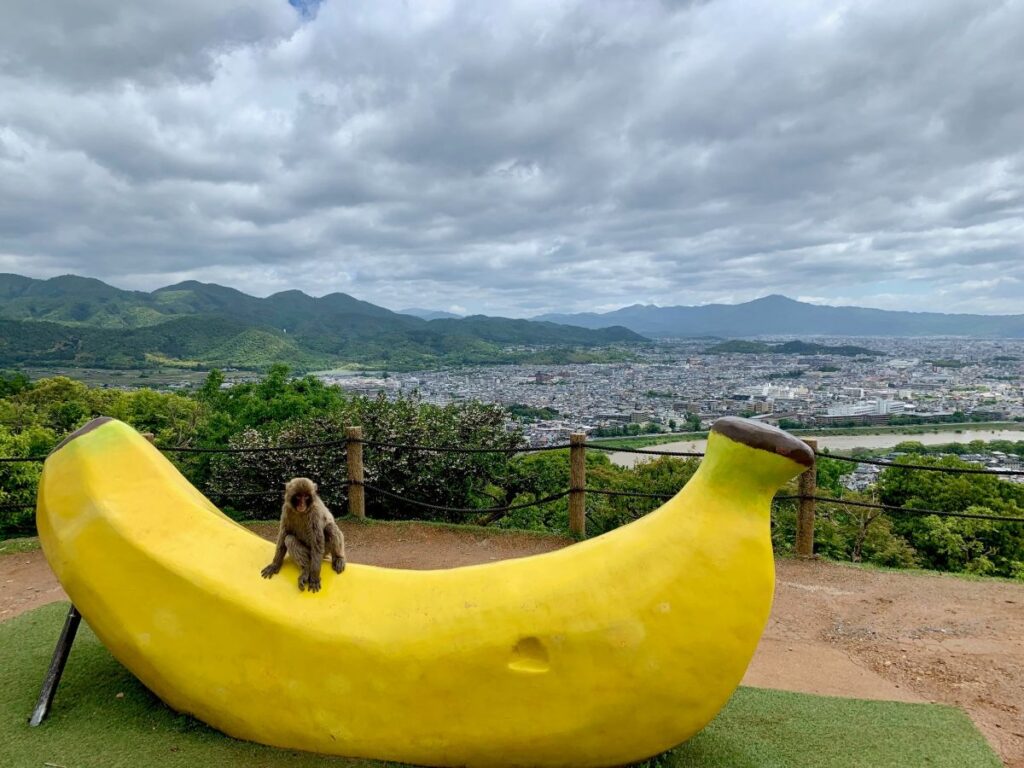
Crowd, Seasonality & Photo timings
My cheat sheet outlines when to visit some of the top attractions. Best window (go now) vs Busy/avoid for quick decisions. If you only remember one thing: early mornings win in Kyoto.
When to visit/not visit the most popular sites in Kyoto
| Sight | Best window (go now) | Busy / avoid | Notes |
| Ninenzaka & Sannenzaka | 06:30–07:30 | 09:30–16:00 | Empty lanes and soft light early; return later for shops. |
| Kiyomizu-dera | 08:00–09:00 | 10:00–15:00 | Enter inner area first; then the wooded paths. |
| Gion side streets | 09:30–11:00; 16:00–18:00 | 18:00–21:00 (main drags) | Respect private alleys; evenings crowd quickly. |
| Fushimi Inari | 06:00–08:00; 17:00–20:00 | 09:00–15:30 | Yotsutsuji viewpoint has space; bring a torch if late. |
| Arashiyama Bamboo Grove | 06:30–07:15 | 07:45–11:00 | If busy, switch to Adashino. |
| Adashino Nenbutsu-ji | 09:00–10:00; 15:30–16:30 | 11:00–14:00 | Pair with Saga Toriimoto. |
| Tenryū-ji garden | 08:30–09:30 | 10:30–14:00 | One-way loop helps flow. |
| Kinkaku-ji | 11:00–12:00; 15:30–16:30 | 12:00–15:00 | Aim off-peak to avoid shuffling queues. |
| Daitoku-ji sub-temples | 12:30–15:30 | — | Usually calm even mid-day. |
| Philosopher’s Path | 16:00–18:00 | 10:00–14:00 (peak seasons) | Late light and fewer crowds. |
My Top Tip: If you miss your planned window, or arrive and it’s too busy for you, don’t wait – switch to the alternate (Adashino, Daitoku-ji, Kennin-ji e.t.c.) and return later.
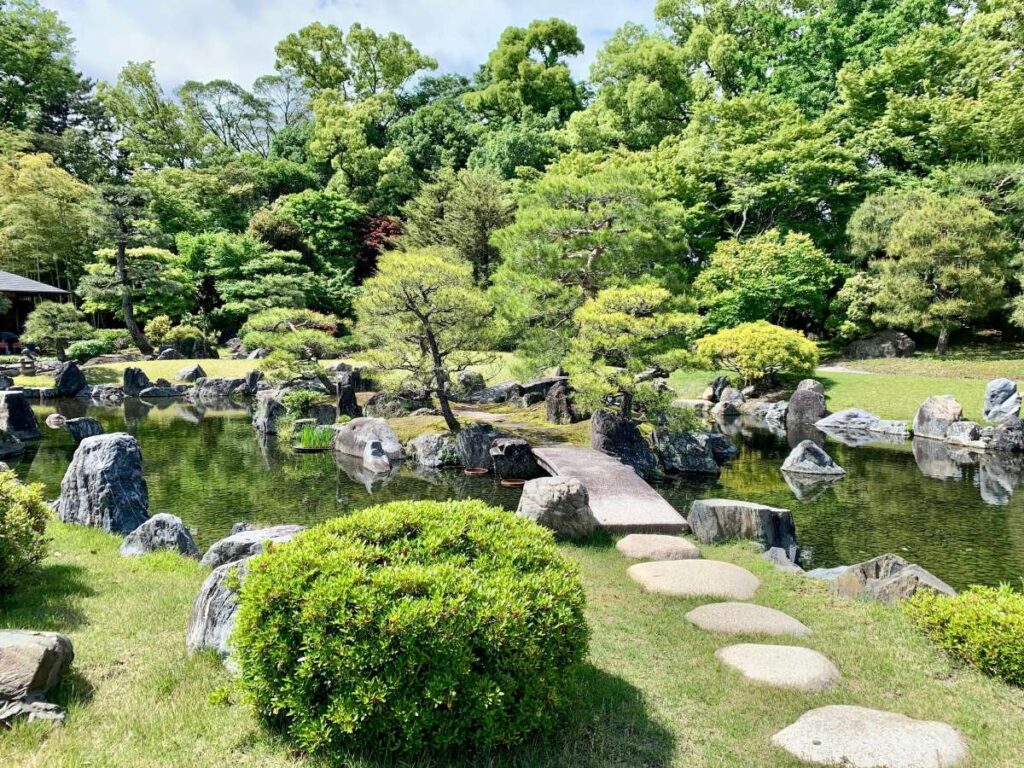
Seasonal timings to consider
- Cherry blossom (late Mar-early Apr) and autumn foliage (Nov) are lovely but busy, stick closely to best windows I outlined above.
- Avoid Golden Week (early May) if possible; if not, lean on early starts and late finishes.
- Photo windows: blue hour at Fushimi; early shade in the bamboo; late light on Philosopher’s Path.
Kyoto tips for Accessibility & Families
Family/stroller route tweaks for Day 1 & Day 2
- Kiyomizu-dera: use the accessible path on the left side of the main approach.
- Arashiyama: paths are mostly flat; some lanes have uneven stones.
- Fushimi Inari: lower torii sections suit a carrier; steps steepen higher up.
- Coin lockers & baby rooms: found in major stations and department stores around Shijō/Kawaramachi and Kyoto Station.
Wheelchair access information by stop
- Kiyomizu-dera: some step-free areas; steep gradients.
- Tenryū-ji: garden paths manageable; temple buildings may have thresholds.
- Kinkaku-ji: loop path has slopes and gravel.
My Top Tip: For toddlers, a compact stroller plus a soft carrier covers both days.
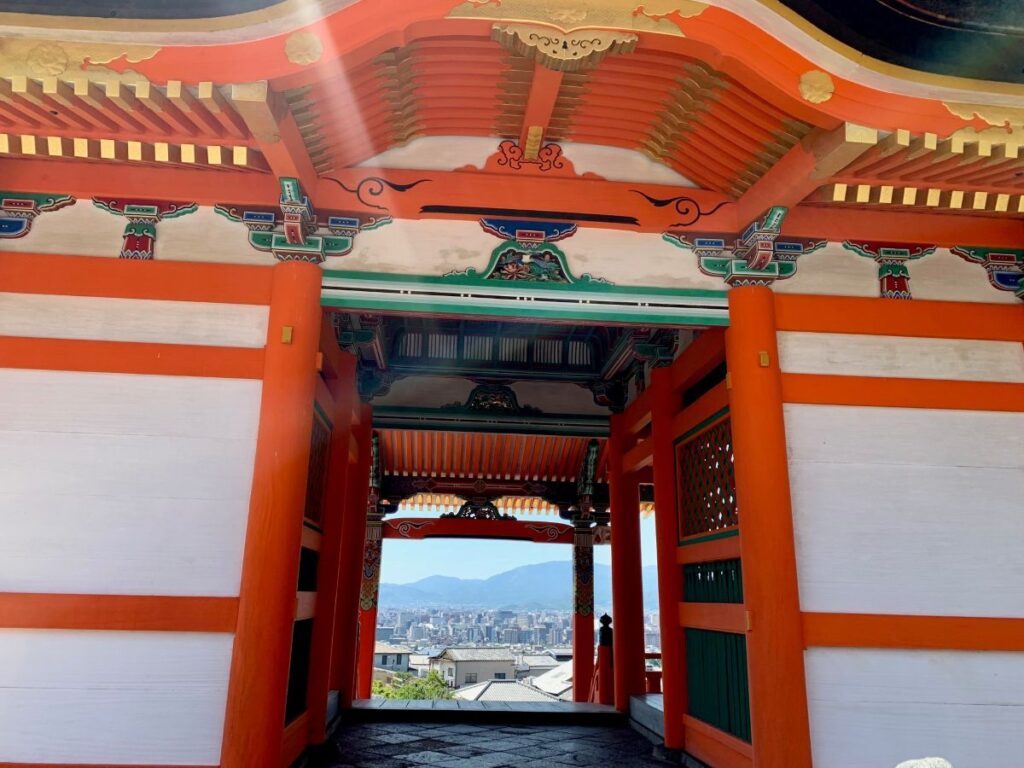
Etiquette in Gion & at Temples
Unfortunately there has been a lot of bad press in recent times about tourists not respecting the locals and the area. These quick tips will ensure you don’t fall foul of this.
Quick etiquette checklist
- Keep voices low; follow one-way paths.
- Dress modestly (shoulders/knees covered at religious sites).
- No eating while walking in narrow heritage lanes.
Photo guidelines you should know
- Don’t block doorways or private alleys; never chase geiko/maiko for photos.
- Tripods are often restricted; follow signage.
Plan B: Rain/Heat Alternatives & Timing Tweaks to save your itinerary
Rain-safe swaps by district
Kyoto National Museum
Large museum near Sanjūsangen-dō with rotating exhibitions and a clear overview of Kyoto arts.
Time 60–90 mins • Cost typical ¥700–¥1,000
Kyoto Railway Museum
Hands-on transport museum with historic trains – good for families and wet afternoons.
Time 60–120 mins • Cost typical ¥1,200–¥1,500
Department-store food halls (Daimaru, Takashimaya)
Basement “depachika” for tasting bentō, sweets and tea under one roof, fully covered.
Time 30–60 mins • Cost Free (food typical ¥600–¥1,500)
Tea ceremony experience (Gion)
Short, guided ceremony explaining tools, steps and etiquette – ideal when weather turns.
Time 45–60 mins • Cost typical ¥3,000–¥5,000
Heat-aware plans (shade, vending, rest stops)
- Prioritise shaded corridors (bamboo/temple gardens), pause at vending machines, and add an indoor stop every 90 minutes.
- Shift one marquee sight to early morning; keep afternoons for museums or riverside cafés.
My Top Tip: On hot days, do Kiyomizu-dera at opening, then museums and a later-evening Fushimi loop.
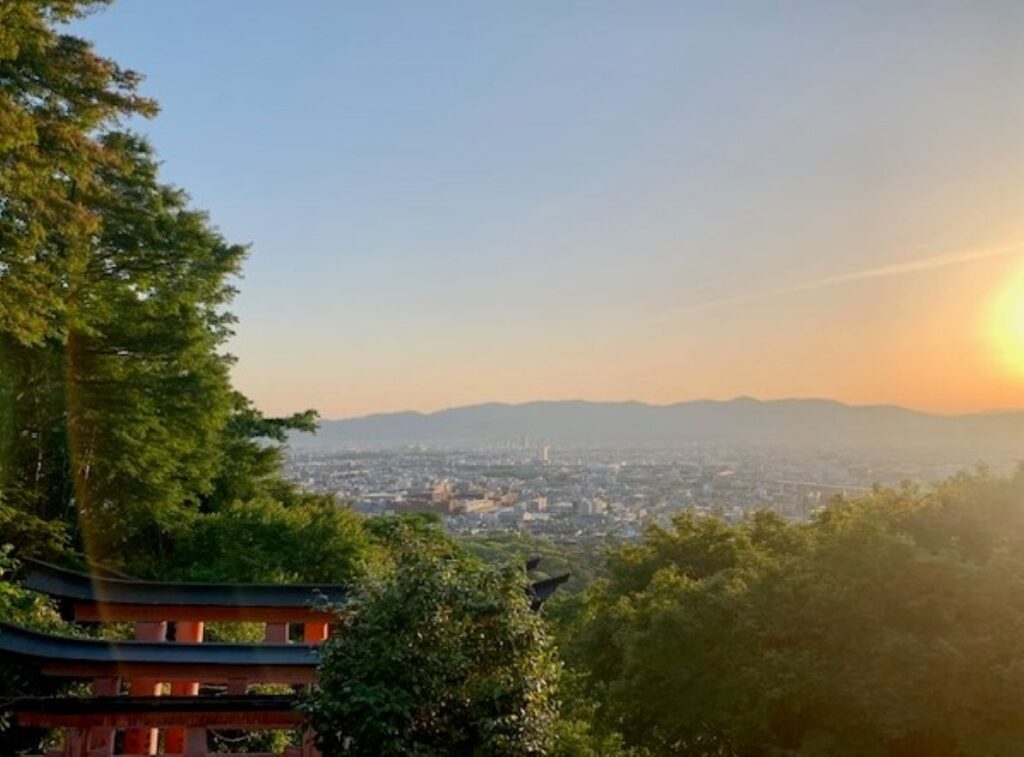
FAQ’s about planning Kyoto
Is 2 days enough to see Kyoto?
Two days gives you a good taste of Kyoto’s highlights, especially if you focus on a clear route. You’ll be able to see top sights like Kiyomizu-dera, Fushimi Inari, Arashiyama, and Kinkaku-ji. That said, Kyoto has over 1,600 temples and shrines, so two days is more of a highlights tour. If you want slower travel or to explore less-visited neighbourhoods, allow at least 3–4 days.
What is the best time of day to visit Fushimi Inari?
Fushimi Inari is open 24/7, so the best times are early morning before 8am or late afternoon into sunset. At these times the paths are calmer, cooler in summer, and your photos won’t be full of crowds. Midday is the busiest and hardest time to enjoy it.
Is it better to visit Arashiyama Bamboo Grove or Adashino Nenbutsu-ji?
The Arashiyama Bamboo Grove is the famous one, but it’s extremely crowded from mid-morning. Adashino Nenbutsu-ji is a quieter temple with its own smaller bamboo path, thousands of stone statues, and a calmer atmosphere. If you want iconic photos, head to Arashiyama early at dawn. If you’d rather avoid the crowds, Adashino is the better choice.
Can I see geisha in Gion, and what are the rules for photography?
You may see geisha or maiko (apprentices) walking between teahouses in Gion, especially around dusk. If you do, admire respectfully and never block their way. Photography is now restricted on some private alleys, and taking close-up photos without permission is considered rude.
What should I do if it rains during my Kyoto visit?
Kyoto has plenty of covered or indoor options. Nishiki Market is a great rainy-day food stop, while temples like Kennin-ji or Sanjūsangen-dō can be enjoyed under cover. If you prefer shopping, head to the Teramachi or Shinkyōgoku arcades. Keep an umbrella handy, rain showers are common, but they often pass quickly.
Is this 2-day Kyoto itinerary suitable for kids or older travellers?
Yes, but expect long walking days or plan for more taxis to save your legs. Families with younger children or older travellers may want to skip one or two stops to reduce walking. Kyoto’s temples often have steps and uneven ground, though places like Fushimi Inari’s lower trails, Maruyama Park, or Philosopher’s Path are easier alternatives.
Where’s the best area to stay in Kyoto?
For two days, staying near Gion or downtown (Kawaramachi/Shijō) is ideal. You’ll be close to Day 1’s route and have plenty of dining options. Kyoto Station is another good base if you want fast transport connections, especially for trips to Nara or Osaka. Both areas are well connected and make it easy to follow a 2-day plan without wasting time commuting.
Can I do a day trip to Nara from Kyoto?
Yes. Nara is less than an hour away by train, either on the JR Nara Line from Kyoto Station or the Kintetsu Line from central Kyoto. It makes a great day trip, with highlights like Todai-ji, the Giant Buddha, and the free-roaming deer in Nara Park. If you only have two days in Kyoto it’s best to save Nara for another trip, but if you add a third day, it’s one of the easiest day trips.
Read my guide to a day trip to Nara from Kyoto, how to get there, how to plan it and what not to miss
Final Notes on Kyoto
- Download the map before you set off and keep a small backup plan for rain/heat.
- Use SUICA and mix rail with a strategic taxi to save time and see more.
- Keep “What/Why” front-of-mind: if a sight doesn’t fit your interests, swap it, there’s plenty to do in Kyoto with even more than 2 days.
TOP TIP! Starting or ending your trip in Tokyo? Try my beginners guide to TOKYO below!
PICK THE RIGHT TRANSPORT FROM THE AIRPORT : Save time and money from Haneda and Narita
THE BEST TOKYO HOTELS : Perfect for couples, first time travellers and those looking to minimise their time on public transport
PLAN YOUR PERFECT TOKYO ITINERARY : My guide to the best sights, restaurants and transport tips all planned for you
HOTELS FOR FAMILIES AND BIG GROUPS IN TOKYO : More space, rooms that sleep multiple people and locations that make life easier

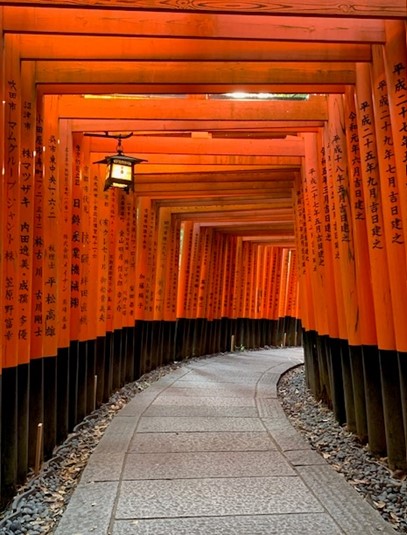
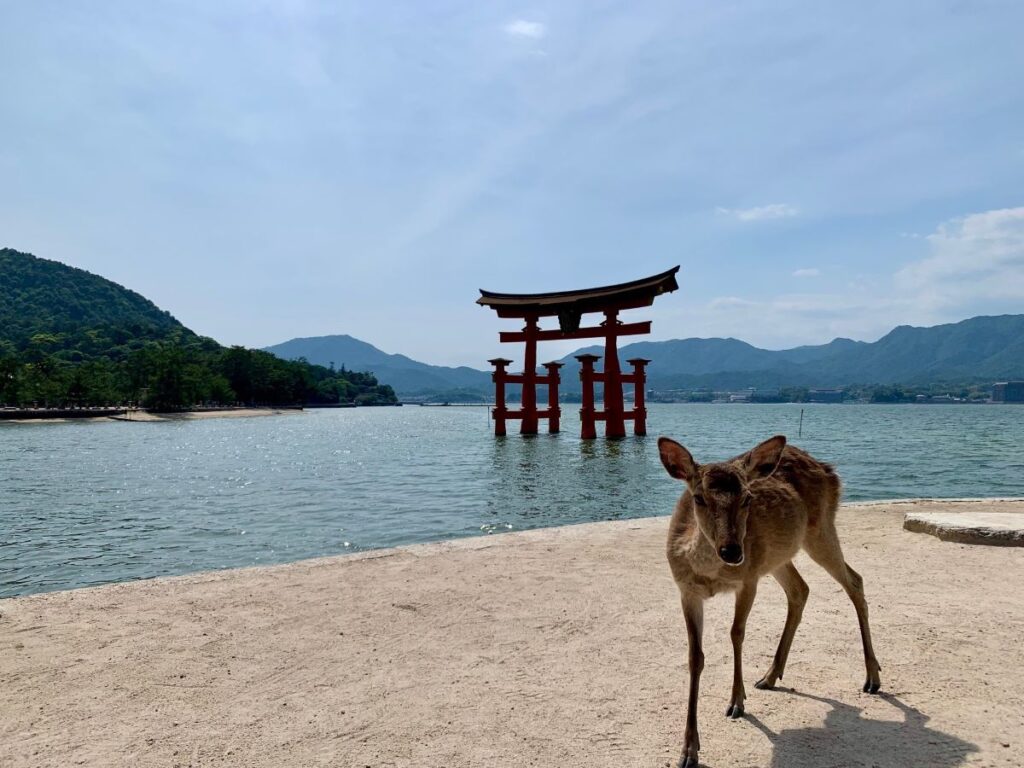
Pingback: Japan two week Itinerary: My exact Golden Route - Travel tips and guides - Global Trip Diaries
Pingback: Is the JR Pass worth it? Simple cost comparison and advice - Travel tips and guides - Global Trip Diaries
Pingback: The best apps for travelling in Japan - Travel tips and guides - Global Trip Diaries
Pingback: Day trip to Nara from Osaka & Kyoto: Route, Map & Prices
Pingback: Family friendly hotels in Osaka